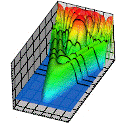Department of Physics and Astronomy: Publications and Other Research
Date of this Version
3-13-2012
Abstract
We present a theoretical model for describing the interaction of an electron, weakly bound in a short-range potential, with an intense, few-cycle laser pulse. General definitions for the differential probability of above-threshold ionization and for the yield of high-order-harmonic generation (HHG) are presented. For HHG we then derive detailed analytic expressions for the spectral density of generated radiation in terms of the key laser parameters, including the number N of optical cycles in the pulse and the carrier-envelope phase (CEP). In particular, in the tunneling approximation, we provide detailed derivations of the closed-form formulas presented briefly by M. V. Frolov et al. [Phys. Rev. A 83, 021405(R) (2011)], which were used to describe key features of HHG by both H and Xe atom targets in an intense, few-cycle laser pulse.We then provide a complete analysis of the dependence of the HHG spectrum on both N and the CEP φ of an N-cycle laser pulse. Most importantly, we show analytically that the structure of the HHG spectrum stems from interference between electron wave packets originating from electron ionization from neighboring half-cycles near the peak of the intensity envelope of the few-cycle laser pulse. Such interference is shown to be very sensitive to the CEP. The usual HHG spectrum for a monochromatic driving laser field (comprising harmonic peaks at odd multiples of the carrier frequency and spaced by twice the carrier frequency) is shown analytically to occur only in the limit of very large N, and begins to form, as N increases, in the energy region beyond the HHG plateau cutoff.


Comments
Published in PHYSICAL REVIEW A 85, 033416 (2012)
©2012 American Physical Society. Used by permission.